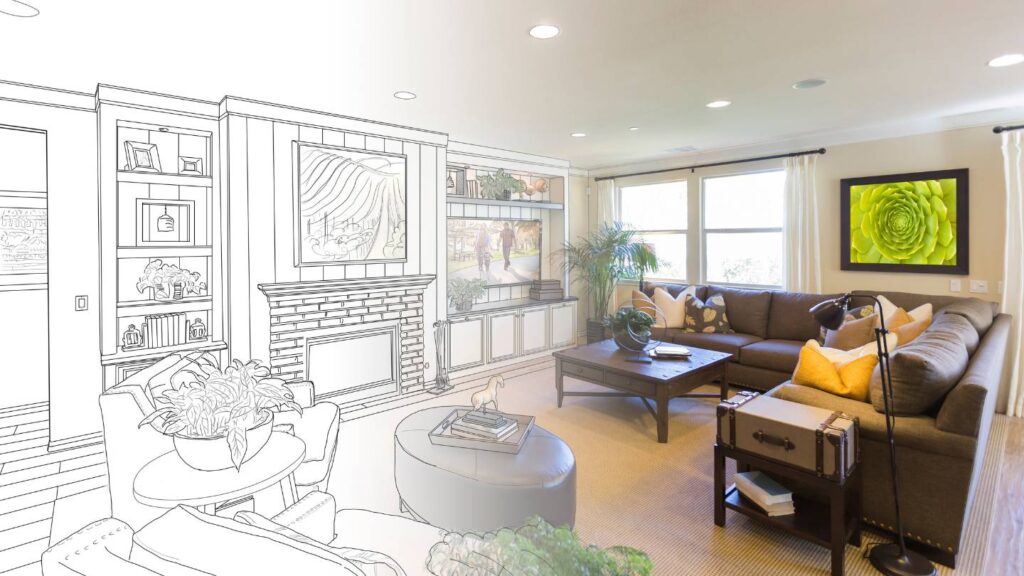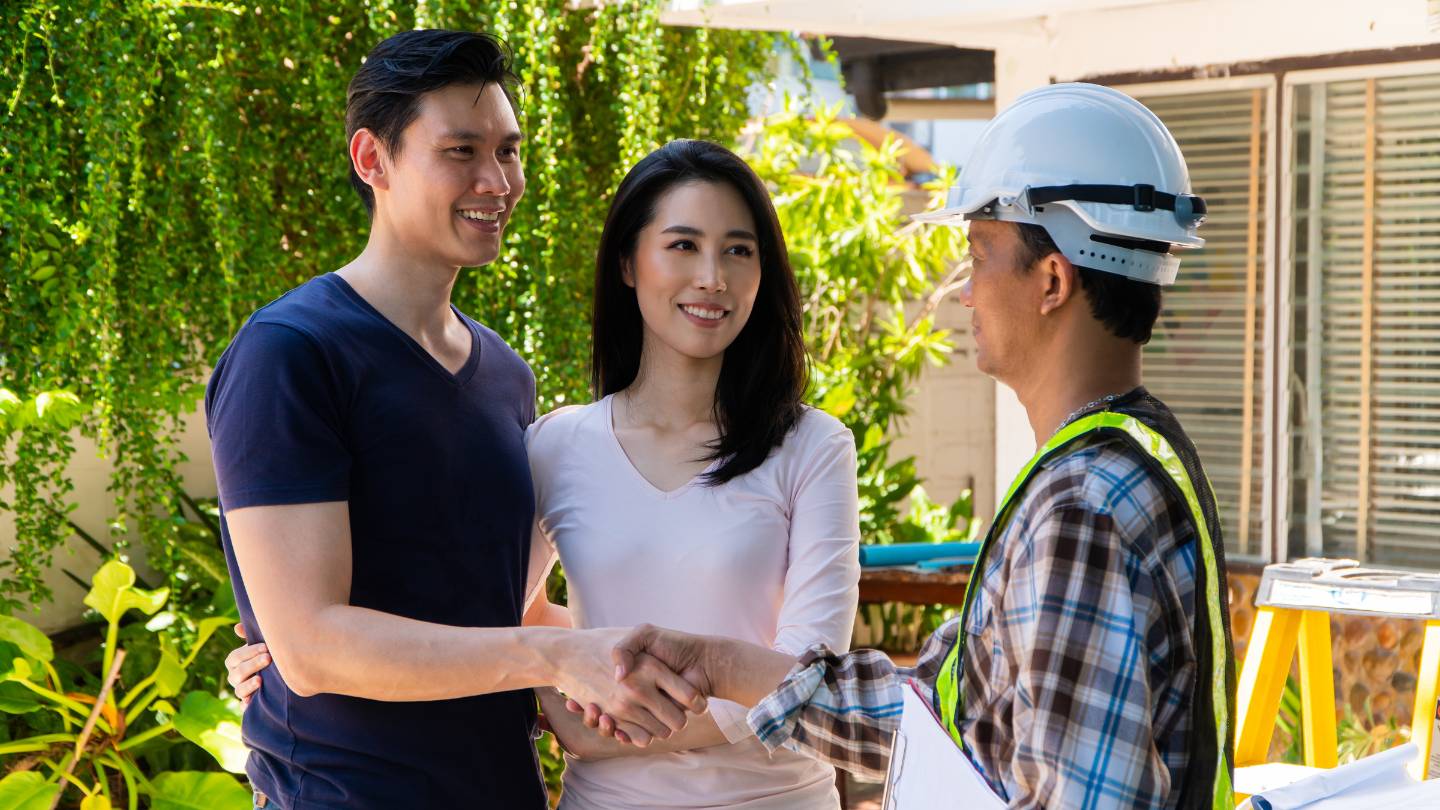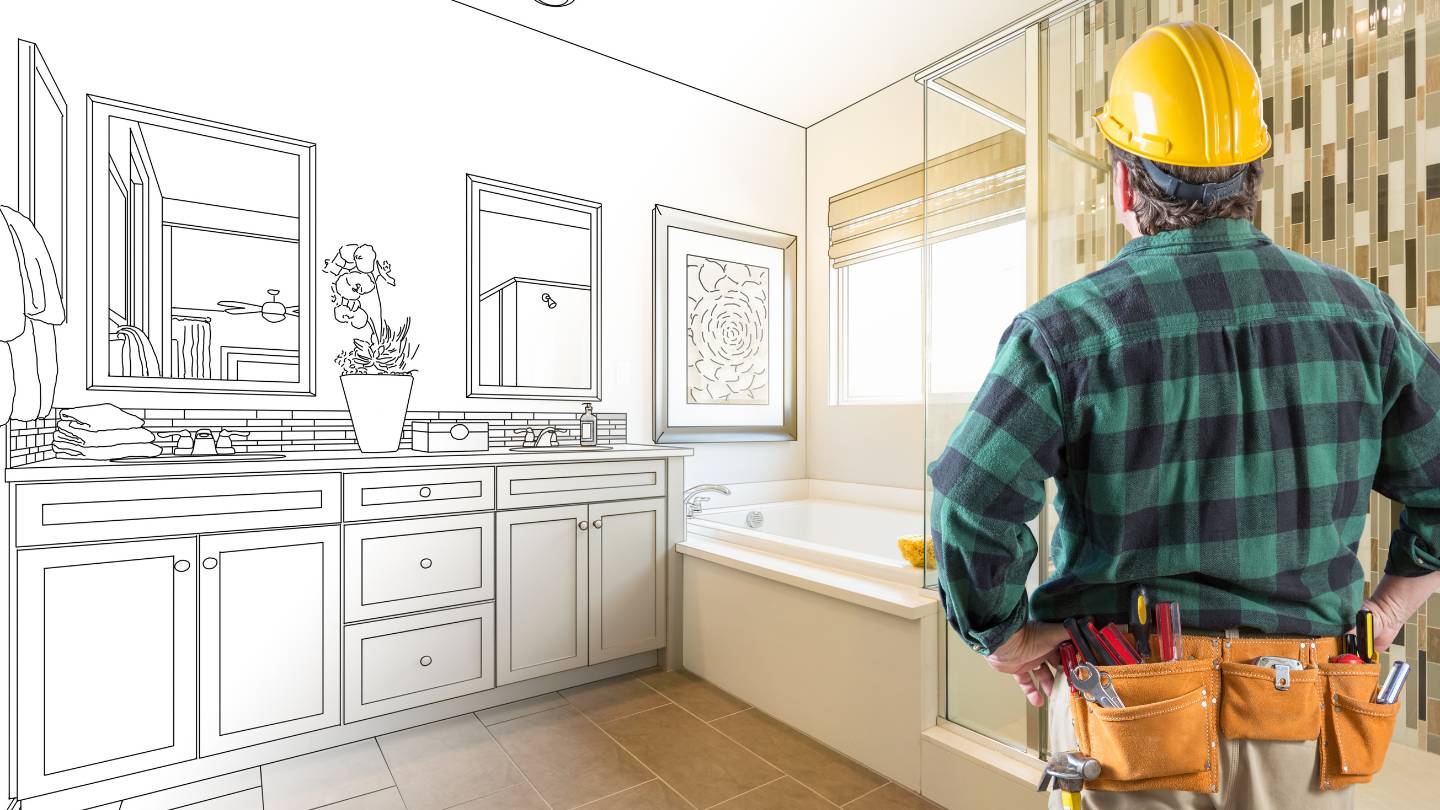When you build a home from the ground up, you get to personalise every detail to fit your needs and tastes. While you're busy planning the interior of your ideal house, don't forget to put energy efficiency first.
This choice will have a beneficial effect on the environment, but it will also save you money and make your life easier in the long run.
This guide will help you build an eco-friendly, pleasant, and sustainable home that reflects your beliefs and vision by exploring several energy-efficient solutions that are designed for custom home builds.
Importance Of Energy Efficiency In Custom Home Builds
Protecting the Environment: Minimising Carbon Emissions
Sustainable, energy-efficient bespoke houses are an important part of being a good environmental steward. Sustainable building practices allow homeowners to significantly reduce their environmental effects.
During the construction and ongoing maintenance of these dwellings, energy efficiency is given the utmost importance. In the long run, this helps lessen our impact on the environment by decreasing our need for fossil fuels.
Less Energy Expense: A Long-Term Solution for Your Money
Cost savings on energy bills is a major perk of energy-efficient bespoke homes. Equipped with state-of-the-art insulation and high-performance HVAC systems, these homes promise to maximise energy efficiency. Lower utility expenses allow homeowners to save money and lessen their environmental impact over time.
Improved Cosiness: A Perfect Indoor Environment
Comfort is the top priority in energy-efficient homes, which is why they use effective insulation and climate control. When your roof and walls are well-insulated, you won't need to use the thermostat as frequently. There will be fewer drafts and temperature swings, which will improve the quality of life for the people living there.
Eco-Friendly and Long-Lasting Sustainable Construction Materials
Energy-efficient bespoke homes typically use sustainable building materials. These materials are not only durable and long-lasting, but they are also eco-friendly. All of the materials were carefully selected with an eye towards sustainability, including recycled steel and wood, energy-efficient windows made from state-of-the-art materials, and every other part.
The Art of Anticipating and Responding to Future Changes
When it comes to environmental legislation and energy standards, bespoke homes built using sustainable principles are sure to be around for a long time. Sustainable home designs are better able to meet or surpass energy efficiency standards, shielding homeowners from the future expense of retrofitting to comply with increasingly stringent regulations imposed by governments and municipalities across the globe.
Real Estate Appreciation: There is a general trend towards greater
Green Advantage Values for one-of-a-kind houses that manage to be both ecologically conscious and aesthetically beautiful. More and more people are searching for eco-friendly amenities in a home since they have a positive impact on the environment and lower operating expenditures. Both the planet and your bottom line will benefit from energy efficiency. Your property's value will increase if you put money into it.
Government Programmes: Encouraging Eco-Friendly Decisions
Both federal and state agencies are beginning to see the value of energy efficiency measures. A number of municipal governments offer rebates and incentives to entice homeowners to build or renovate homes with higher energy efficiency ratings. These incentives, which might be in the shape of tax credits, lower permit costs, or direct financial assistance, can further incentivise the transition to sustainability.
Extremely Energy-Efficient Homes
Start With Smart Design
Smart design is the first step towards affordable zero-net energy homes. It is important for everyone engaged in the process, from designers and architects to builders and homeowners, to understand the many energy-saving measures needed to construct a net-zero house.
Plus, the house needs to be planned in a way that allows builders and subcontractors to execute these procedures with minimal expense. Builders should emphasise a few key points to designers as they work on the project. These important elements won't be overlooked if the builder and designer communicate thoroughly.
Use The Sun For Solar Tempering
Heat your home more cheaply in the winter by letting the sun's rays in through south-facing windows. To save money on air conditioning, shade those same windows throughout the summer. By reducing the need for thermal bulk, solar tempering maximises passive solar heating without increasing its overall cost. It is important to consider solar tempering during the design phase.
Optimise With Energy Modeling
To attain net-zero energy while keeping expenses down, it is recommended to estimate the home's energy demand during the design process using energy modelling software. In order to strike a balance between the building's performance and construction cost, the results can inform design choices or modifications.
Super-Seal The Building Envelope
Building envelope super-sealing is the most cost-effective way for builders to make zero-energy homes more energy efficient. You can choose from a number of tried-and-true methods for air sealing. Pick a strategy that works with your weather, abilities, and finances.
Super-Insulate The Building Envelope
Creating an airtight home is the most cost-effective option for going zero energy, but super-insulating the house might be even more cost-effective. As indicated earlier, energy modelling can assist in determining the optimal degrees of insulation for the ceiling, walls, and floors. To reduce thermal bridging and facilitate envelope insulation, use framing strategies that do just that.
Use Highly Insulated Windows And Doors
Thirdly, replacing inefficient windows and doors is a great way to save money on heating and cooling your home. Think of them as large energy holes in an otherwise airtight and well-insulated building envelope. Selecting the right window and door goods, placing them strategically, and optimising their size and orientation are all ways to control heat loss and gain.
Create An Energy Efficient, Fresh Air Supply
Because of how airtight zero energy houses are, maintaining a steady supply of clean, filtered air and controlling humidity are essential to their performance. One bright side to this ventilation requirement is that zero-energy homes outperform conventional homes in terms of comfort and health. Heat recovery ventilation (HRV) and energy recovery ventilation (ERV) systems are particularly efficient at removing stale air from a building while simultaneously reintroducing the heat it had before it was removed.
Select An Energy Efficient Heating And Cooling System
The nett zero energy objective cannot be achieved without highly efficient and reasonably priced HVAC systems. A ductless heat pump with an air source, sometimes known as a mini-split heat pump, is a viable option. These systems are incredibly cost-effective and energy-efficient, without the drawbacks of thermal heat pumps or central forced-air systems.
Heat Water Wisely
After HVAC, water heating is typically a household's biggest energy hog. Because of this, it is critical that designers and builders take steps to reduce the need for hot water, such as using efficient water heating technologies.
Install Energy Efficient Lighting
An essential aspect of zero-energy houses is their lighting, which is designed to minimise energy consumption while maximising light for tenants. LED lights are ideal for these kinds of jobs. In comparison to CFLs, they use less energy, last far longer, and don't contain mercury.
Plus, they're versatile enough to accommodate a wide range of lighting requirements, from warm, gentle illumination to harsh, white light. One can significantly lessen one's home's energy consumption by choosing the appropriate LED lights for the job, strategically placing the lights, and making the most of natural light.
Select Energy Efficient Appliances And Electronics
Due to the extremely energy-efficient building shells and HVAC and water heating systems used in zero-energy homes, a new group of appliances and gadgets emerged as the primary energy consumers in these homes. Consequently, the last stage in reducing energy use in the home is to choose appliances and electronics with high-efficiency ratings.
Use The Sun For Renewable Energy
The most economical renewable energy source for a zero-energy house right now is solar photovoltaic (PV) panels connected to the grid. You may use them to power your home's HVAC, lights, appliances, and even your hot water heater. Yet, they account for the lion's share of a zero-energy home's price tag, so finding ways to cut or lessen that expense is crucial.
Tips To Improve The Energy Rating Of Your Home
Individuals benefit from living in energy-efficient homes in a number of ways, including reduced heating and electricity expenses, improved comfort and safety during unexpected blackouts, increased home market value, and improved health. This kind of house is good for the planet and its inhabitants alike.
From the perspective of the power grid, energy-efficient homes can actively aid the grid by reducing demand for electricity during periods of scarcity and by adding this precious commodity to the grid when it is needed, thus aiding the system.
Consume Less Energy From The Grid
To find out how you may improve your energy score and reduce your consumption, have an energy assessment performed on your home. Many options exist for reducing power consumption and reducing one's impact on the grid.
Replace Windows With Modern, Efficient Double-glazing
Modern, energy-efficient double-paned windows and doors are another great investment that can boost your score.
Energy Smart Landscaping
Your home's heating and cooling bills will go down, and your energy score will go up with a smart landscaping design that also improves the curb appeal of your property.
Wall Insulation
In older homes that were not built with energy efficiency in mind, adding insulation to the loft and walls can help minimise your energy bills and usage. You may improve your score and make your house more energy efficient by doing this.
Smart Devices
Nowadays, smart homes that make people's lives easier and lessen their impact on the environment are sought after by all modern homebuyers. When not in use, smart gadgets may detect when electricity is being used and automatically switch off. Even if people forget, these pests won't leave your home, and who wouldn't want them? An excellent way to raise your house's value, a smart home is sure to be in high demand.
Conclusion
Custom home builds offer a unique opportunity to create eco-friendly, pleasant, and sustainable homes that reflect personal preferences and values. Energy efficiency is crucial in these homes, as it not only protects the environment by minimising carbon emissions but also saves money and improves the quality of life for the residents. Sustainable building materials, such as recycled steel and wood, are used in these homes, ensuring durability and longevity.
Sustainable homes are better able to meet or surpass energy efficiency standards, reducing the need for retrofitting to comply with global regulations. Additionally, eco-friendly homes can increase real estate appreciation, benefiting both the planet and the homeowner's bottom line. Government programs, such as tax credits, lower permit costs, and direct financial assistance, encourage the transition to sustainability.
To build an energy-efficient home, start with smart design, focusing on energy-saving measures and planning the house in a way that allows builders and subcontractors to execute these procedures with minimal expense. Consider using solar tempering to heat the home more cheaply in winter and shading windows during the summer to save on air conditioning costs.
Use energy modelling software to estimate the home's energy demand during the design process and choose a building envelope super-sealing method that works best with the homeowner's weather, abilities, and finances.
To achieve zero energy, it is essential to create an airtight home with high insulation levels, using highly insulated windows and doors and creating an energy-efficient fresh air supply. Heat recovery ventilation (HRV) and energy recovery ventilation (ERV) systems are effective in removing stale air and reintroducing heat.
Choose an energy-efficient heating and cooling system, such as a ductless heat pump or mini-split heat pump, and use efficient water heating technologies. Install energy-efficient lighting, such as LED lights, which use less energy, last longer, and don't contain mercury.
Energy-efficient appliances and electronics are crucial for reducing energy use in homes. Solar photovoltaic (PV) panels are the most economical renewable energy source for a zero-energy home. To improve the energy rating of your home, have an energy assessment performed and consider replacing windows with modern, energy-efficient double-glazing, energy-smart landscaping, and wall insulation.
Smart devices, such as smart homes that detect when electricity is being used and automatically switch off when not in use, are also sought after by modern homebuyers. These devices can help reduce energy consumption and impact the grid, ultimately improving your home's overall energy efficiency.
Content Summary
- Custom home builds allow for personalisation down to the finest detail, including energy efficiency considerations.
- Prioritising energy efficiency not only benefits the environment but also saves money in the long term.
- Sustainable practices in custom home construction significantly reduce environmental impact.
- Energy-efficient homes boast lower utility bills thanks to advanced insulation and HVAC systems.
- Effective insulation and climate control ensure comfort in energy-efficient homes.
- Sustainable construction materials contribute to eco-friendly, durable homes.
- Sustainable home designs meet or surpass energy efficiency standards, ensuring long-term compliance with regulations.
- Eco-friendly homes with energy-efficient features are increasingly valued in the real estate market.
- Government programs offer incentives for eco-friendly home construction and renovation.
- Smart design is crucial for affordable zero-net energy homes.
- Solar tempering utilises sunlight for heating in winter and shading in summer.
- Energy modelling guides design choices for achieving net-zero energy goals.
- Building envelope super-sealing maximises energy efficiency in zero-energy homes.
- Super-insulating the building envelope enhances cost-effectiveness and energy savings.
- Highly insulated windows and doors reduce heat loss in energy-efficient homes.
- Energy-efficient homes maintain a steady supply of fresh air for comfort and health.
- Selecting efficient HVAC systems is essential for achieving net-zero energy goals.
- Efficient water heating technologies contribute to energy savings in homes.
- LED lighting minimises energy consumption in zero-energy homes.
- High-efficiency appliances and electronics further reduce energy usage in energy-efficient homes.
- Solar photovoltaic panels provide renewable energy for zero-energy homes.
- Energy-efficient homes offer reduced heating and electricity expenses.
- Improved comfort and safety during blackouts are benefits of energy-efficient homes.
- Energy-efficient homes contribute to increased property market value.
- Energy-efficient homes support the power grid by reducing demand during peak periods.
- Energy assessments identify opportunities for reducing power consumption in homes.
- Modern double-glazed windows improve energy efficiency in homes.
- Smart landscaping design reduces heating and cooling bills in homes.
- Wall insulation minimises energy usage and improves energy efficiency.
- Smart home devices enhance convenience and reduce energy consumption.
- Custom home builds allow for detailed personalisation, including energy efficiency.
- Prioritising energy efficiency benefits both the environment and long-term savings.
- Sustainable practices in construction reduce environmental impact.
- Energy-efficient homes feature lower utility bills thanks to advanced systems.
- Effective insulation and climate control ensure comfort in all seasons.
- Sustainable materials contribute to eco-friendly, durable homes.
- Sustainable designs meet or exceed energy efficiency standards.
- Eco-friendly homes are increasingly valued in the real estate market.
- Government programs offer incentives for eco-friendly construction.
- Smart design is crucial for affordable zero-net energy homes.
- Solar tempering optimises natural heating and cooling.
- Energy modelling informs design choices for net-zero energy.
- Super-sealing the building envelope maximises energy efficiency.
- Super-insulating enhances cost-effectiveness in energy-saving.
- Insulated windows and doors reduce heat loss in homes.
- Energy-efficient homes maintain a healthy indoor environment.
- Efficient HVAC systems are essential for net-zero energy homes.
- Efficient water heating reduces energy consumption in homes.
- LED lighting minimises energy usage and lasts longer.
- Renewable energy sources like solar power contribute to energy-efficient homes.
Frequently Asked Questions
Energy efficiency not only reduces your environmental footprint but also offers long-term financial benefits. By incorporating energy-efficient strategies into your custom home build, you can significantly lower energy bills, increase comfort levels, and enhance the overall value of your property.
Key design considerations include optimising the orientation and site selection of your home to maximise solar gain and minimise heat loss, investing in a well-insulated building envelope, and selecting energy-efficient roofing materials.
Integrating renewable energy sources like solar power and wind power reduces reliance on traditional energy sources, lowers utility bills, and contributes to a cleaner environment by reducing greenhouse gas emissions.
Smart home technology enables you to monitor and control energy usage remotely, automate energy-consuming devices, and optimise heating, cooling, and lighting systems for maximum efficiency.
Sustainable material options include recycled content materials, locally sourced materials to reduce transportation emissions, and durable materials that require minimal maintenance and replacement.




